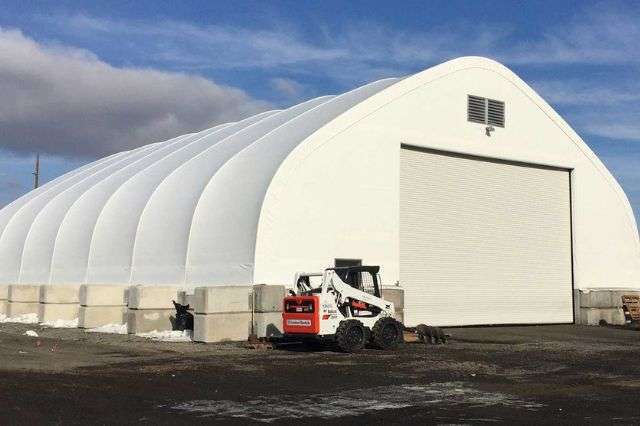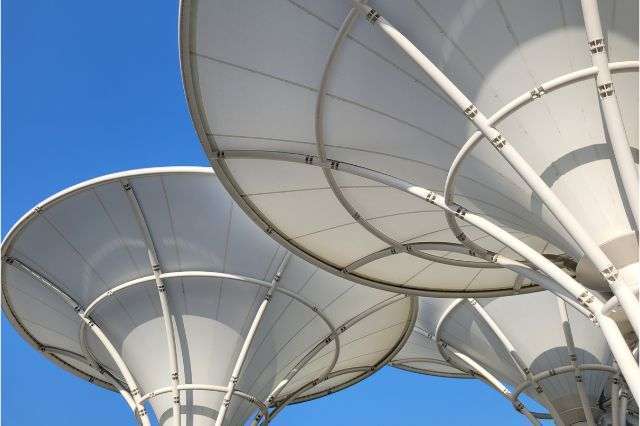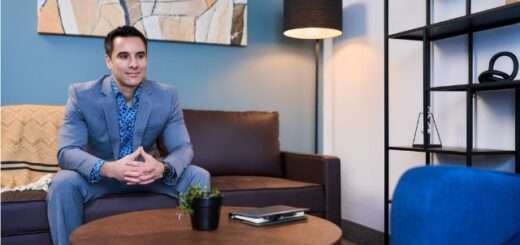The Fabric Of Success: How Fabric Structures Are Redefining Business Spaces
Fabric structures are engineered solutions that combine robust frames, often made of steel or aluminum, with high-quality fabric membranes. These structures are rapidly gaining traction across a diverse range of industries—from manufacturing and warehousing to event spaces and even healthcare facilities.
The reason for this surge in popularity is clear: fabric structures are revolutionizing the way businesses think about space. They offer a flexible, cost-effective, and sustainable alternative to traditional brick-and-mortar buildings, setting a new standard for operational efficiency and environmental responsibility.
The Rise Of Fabric Structures
The concept of fabric structures is not new; it traces its roots back to ancient civilizations that used animal hides stretched over wooden frames for shelter. However, the modern iteration of these structures, often referred to as tension fabric building, has undergone significant advancements in materials science and engineering. These improvements have catapulted fabric structures into the 21st century, making them a go-to solution for a multitude of applications.
Today, tension fabric buildings are commonly employed across a wide array of industries. In the manufacturing sector, they serve as cost-effective, quick-to-deploy warehouses and production facilities. The agriculture industry uses them for storage of equipment and produce, benefiting from their excellent ventilation properties.
Event planners find them ideal for temporary venues, appreciating their flexibility and ease of customization. Even sectors like aviation and military operations are adopting fabric structures for hangars and tactical shelters, respectively.
The rise of fabric structures is not a trend but a reflection of their inherent advantages. Their versatility and adaptability make them suitable for various applications, meeting the demands of modern businesses that require agility and efficiency.
Key Advantages of Fabric Structures
Fabric structures offer a range of advantages that contribute to their growing popularity across various industries. These advantages are not just operational but also financial, making them a compelling choice for businesses. Here are some of the key benefits:
- Cost-Effectiveness
Fabric structures are economically advantageous due to their lower construction and maintenance costs. The materials and labor required for these structures are generally less expensive than those for traditional buildings. Additionally, the durability of the materials used minimizes the need for frequent maintenance, further reducing long-term costs.
- Speed of Installation
The modular design of fabric structures allows for quick assembly and disassembly. This rapid installation enables businesses to become operational in a shorter time frame, meeting market demands more efficiently.
- Versatility
Fabric structures are highly customizable and suitable for a wide range of applications. Their modular nature allows for easy adjustments, providing businesses with the flexibility to meet changing needs. Whether for storage, manufacturing, or event hosting, these structures can be tailored to specific requirements.
These key advantages underscore why fabric structures are an excellent choice for businesses seeking both agility and efficiency.
Material and Design
The effectiveness of fabric structures hinges on two critical factors: the materials used and the design engineering behind them. Both elements work in tandem to provide the durability, versatility, and cost-effectiveness that these structures are known for.
- Types Of Materials Used
High-quality materials are essential for the longevity and performance of fabric structures. Polyvinyl is often used for the fabric membrane due to its resistance to weather conditions and UV rays.
Galvanized steel is commonly chosen for the frame, offering strength and resistance to corrosion. These materials are not just selected for their individual merits but also for how well they work together to create a cohesive, durable structure.
- Design and Engineering
The design and engineering aspects are equally crucial for the durability of fabric structures. Advanced engineering techniques ensure that the structure can withstand various environmental conditions, from high winds to heavy snow loads.
The design also plays a role in the structure’s versatility, allowing for customization to meet specific business needs. Well-engineered fabric structures offer not just durability but also flexibility, making them suitable for a wide range of applications.
These factors collectively make fabric structures a reliable and efficient choice for modern businesses.
Sustainability and Energy Efficiency
In today’s business landscape, sustainability and energy efficiency are not just buzzwords but essential criteria for any infrastructure investment. Fabric structures excel in both these dimensions, making them an increasingly popular choice for environmentally conscious businesses.
- Eco-Friendly Materials and Construction Methods
Fabric structures often employ materials that are eco-friendly. For instance, the polyvinyl used in the fabric membrane is recyclable, reducing waste and promoting sustainability. Additionally, the construction methods for fabric structures are generally less resource-intensive than traditional buildings.
- Energy-Saving Features
Many of these buildings come with features like high-quality insulation and options for natural lighting. The insulation helps in maintaining a stable internal temperature, reducing the need for heating or cooling systems.
Natural lighting options, such as translucent fabric panels, can minimize the need for artificial lighting during daytime hours. These features contribute to lower energy consumption, aligning with sustainability goals while also reducing operational costs.
Fabric structures stand out as a green and efficient choice for today’s businesses. Their sustainability and energy-saving features make them an investment in both the planet and the bottom line.
Also read: Using Clothing and Apparel for Branding Visibility
Future Trends
As fabric structures continue to gain traction in various industries, it’s essential to look ahead at the emerging trends that are poised to further elevate their utility and adoption.
- Smart Fabrics With Integrated Technology
One of the most exciting developments in this space is the advent of smart fabrics. These are materials imbued with integrated technology, such as sensors or conductive fibers, that can monitor environmental conditions. The incorporation of such advanced technology into fabric structures opens up new avenues for automation and real-time monitoring, enhancing operational efficiency.
- Growing Adoption In Unconventional Sectors
While fabric structures have traditionally found a home in industries like manufacturing and agriculture, their versatility is leading to increased usage in less conventional sectors. For instance, healthcare facilities are beginning to utilize fabric structures for temporary clinics or isolation units.
Similarly, the education sector is exploring these structures for temporary classrooms or outdoor learning spaces. This diversification in application showcases the adaptability of fabric structures and hints at their broader potential.
The future of fabric structures looks promising, marked by technological advancements and expanding applications.
Conclusion
As we look ahead, it’s evident that fabric structures are more than just a temporary solution; they are a strategic asset for modern businesses. With advancements in material science and growing adoption across diverse sectors, these structures are poised to play a pivotal role in shaping the future of business spaces.
In sum, fabric structures offer an amalgamation of benefits that make them an invaluable resource for today’s businesses. Their evolving role suggests a transformative impact on how we think about and utilize business spaces in the years to come.






